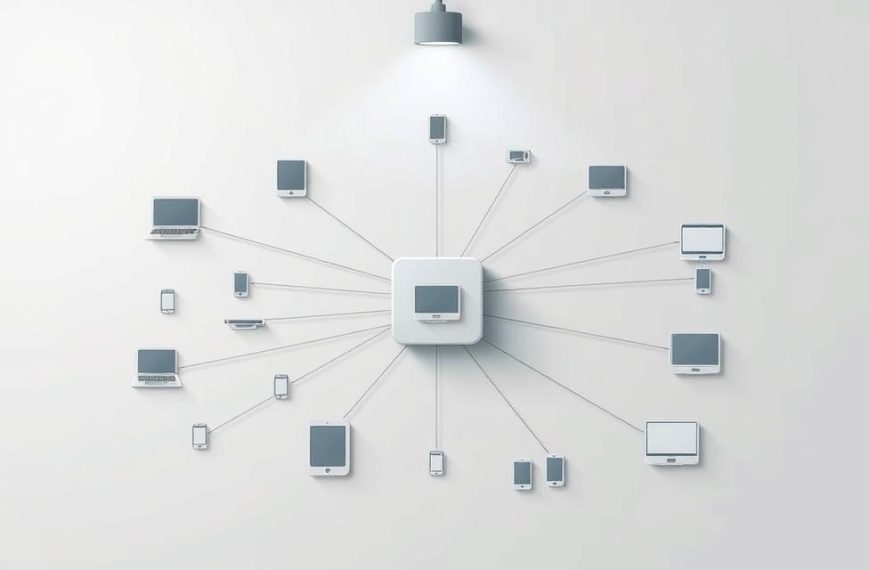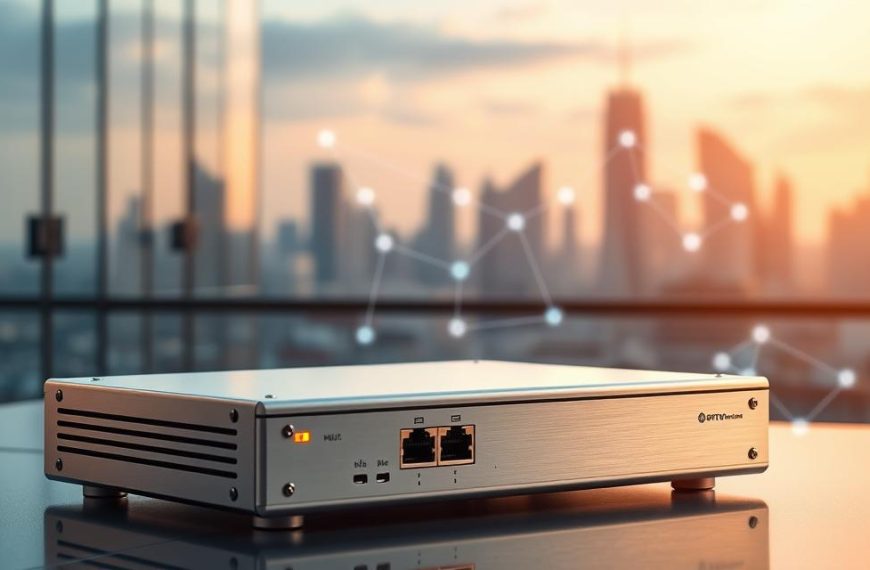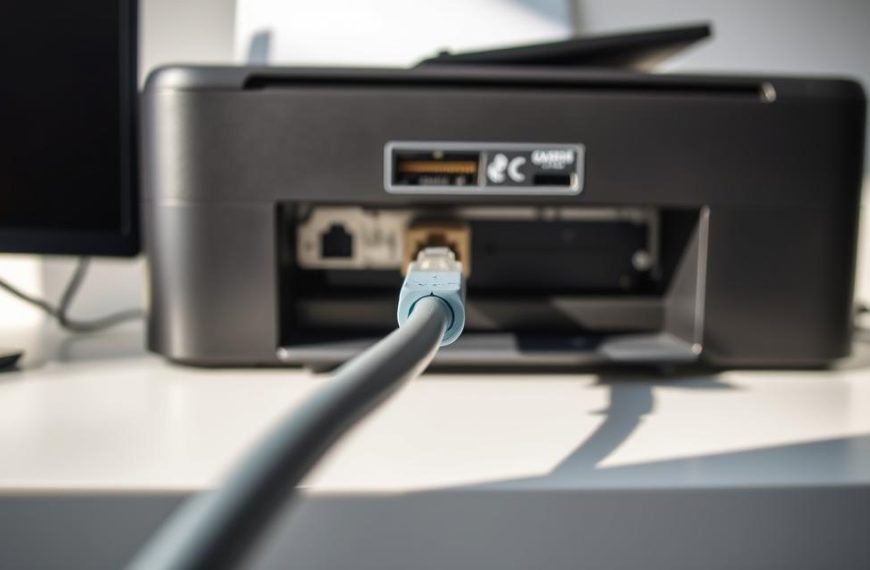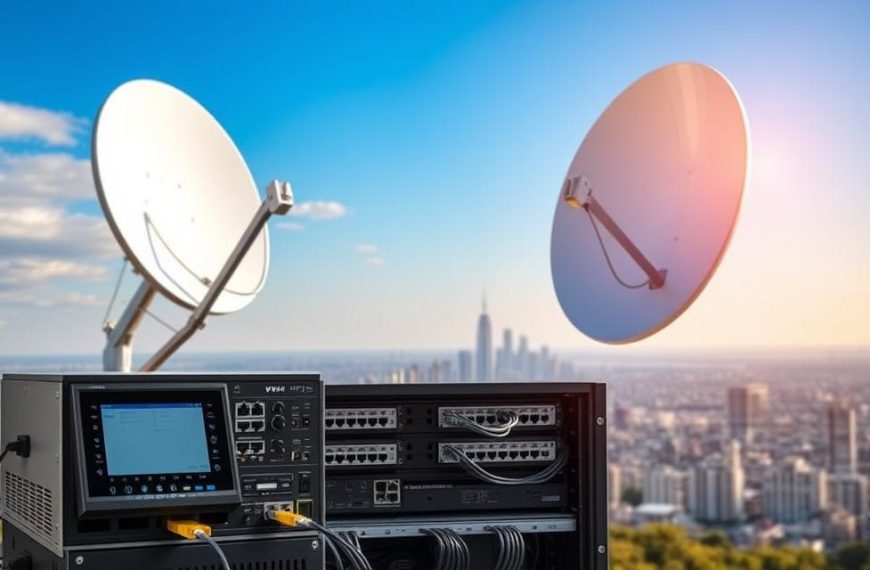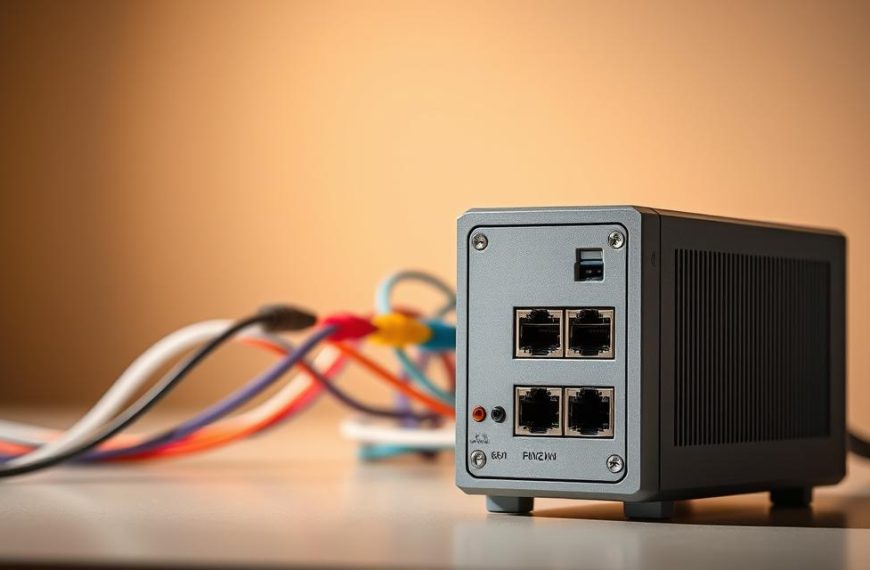A reliable computer network is key for any small business. It connects your team, keeps your data safe, and helps with daily tasks.
Setting up a network for your office is different from a home network. It needs to be more reliable, secure, and grow with your business.
This guide will walk you through setting up a network. You’ll learn to choose the right hardware and create a secure, efficient IT infrastructure.
Whether you’re the business owner or an IT expert, you’ll get to build a system. It will support your current needs and help your business grow.
Essential Planning Before Network Implementation
Before you start building your small business network, planning is key. This step will save you time, money, and stress. It makes sure your network fits your business needs perfectly.
Assessing Your Business Requirements and Network Scope
A good network requirements assessment is the base of your project. Start by listing all devices that will connect to the network. This includes computers, laptops, printers, and IoT devices.
Think about how many users you have and what they do. Do they need to access big files or use lots of bandwidth? Knowing this helps decide how fast and big your network should be.
This process will show you what your network needs to do. It could be simple or a complex client-server network for growth and management.
Choosing Between Wired Ethernet and Wireless Wi-Fi Solutions
The choice between wired vs wireless network is important. Each has its own benefits for different business needs.
Wired Ethernet gives you fast speeds, better security, and no drops. It’s best for computers, servers, and devices that need top performance.
Wireless Wi-Fi lets people move around with laptops and phones. It’s easier to set up and needs less cables.
Many businesses choose a mix of both. They use wired for important, fixed devices and Wi-Fi for mobile use. This makes a network that works well for everyone.
| Feature | Wired Ethernet | Wireless Wi-Fi |
|---|---|---|
| Speed & Performance | Consistently higher and more stable | Can fluctuate based on range and interference |
| Security | Inherently more secure; physical access required | Requires strong encryption protocols (e.g., WPA3) |
| Reliability | Highly reliable; unaffected by signal obstacles | Subject to interference from walls and other devices |
| Installation & Mobility | Fixed location; requires cable runs | Flexible and mobile; easier initial setup |
| Best Use Case | Desktops, servers, printers | Laptops, smartphones, guest access |
Budget Considerations and Implementation Timeline
Creating a solid business network budget is essential. Your budget should cover more than just hardware. Include costs for routers, switches, modems, cabling, and server hardware.
Remember to add in installation costs, whether you hire experts or use your team. Also, include software license costs for network management and security.
Set a clear timeline for implementation. Roll it out in stages to avoid disrupting your business. Make sure to include time for setup, testing, and training to ensure a smooth transition.
How to Create a Computer Network for a Small Business: Hardware Requirements
Setting up a computer network for your small business needs careful planning. You must choose the right equipment for reliable performance, security, and growth.
Core Networking Equipment: Routers, Switches and Modems
Every network starts with three key items. The modem links your business to the internet. The router manages traffic and keeps your network safe.
The network switch connects all your devices. For small businesses, you can pick between unmanaged and managed switches. Managed switches offer more control and security.
Recommended Cisco Small Business RV Series Routers
Cisco’s RV Series routers are reliable for small businesses. They have advanced security and support many devices. Their easy-to-use interface is great for those who aren’t tech-savvy.
TP-Link TL-SG108E Managed Switches
The TP-Link TL-SG108E is a top choice for managed switches. It has eight ports and supports quality of service and VLANs. It’s perfect for businesses that want good network management without spending too much.
Network Cabling: Cat6 Ethernet and Fibre Optic Options
Good cabling is key for stable and fast connections. Cat6 Ethernet cabling can reach speeds of 10 Gbps over short distances. It’s great for most small business needs.
If you need faster speeds or longer cables, fibre optic is better. It’s pricier but lasts longer and doesn’t get affected by electrical interference.
Investing in quality Cat6 cabling is wise. Use certified cables and get them installed by professionals for the best results.
Workstation Computers and Server Considerations
Standard computers usually meet most employee needs. But, you might need special machines for certain tasks. Make sure all devices have the right network cards.
Think about whether you need a dedicated server for data storage. NAS devices are cheaper for sharing files and backups. But, full servers are better for complex tasks.
Your choice depends on how much data you have, how many users you have, and what tasks they do. Many start with NAS and move to servers as they grow.
Step-by-Step Network Installation Process
Setting up your small business network needs careful steps. This network installation guide will guide you from start to finish.
1. Physical Setup and Cable Management Best Practices
Start by placing your router and switches in a central spot. Make sure it’s away from dangers and has good air flow. Use brackets or racks for a neat setup.
For cable management, label both ends of each Ethernet cable. Use cable trays or conduits to keep wires tidy. Leave some extra cable length to avoid connector strain.
Use Velcro straps instead of zip ties for cable management. This makes adjustments easier later. It also helps with future upgrades without rewiring.
2. Configuring Your Router and Network IP Addressing
The router configuration starts with accessing your router’s admin page. Most use default addresses like 192.168.1.1 or 192.168.0.1.
Use DHCP for automatic device setup. Reserve static IP addresses for servers and printers. Keep a record of all IP addresses for future use.
Set up your WAN connection as your internet service provider instructs. Test your internet connection before moving on to device setup.
3. Setting Up Network Security Protocols and Encryption
Your network security setup starts with changing default passwords. Create strong, unique passwords for router and Wi-Fi access.
Use WPA3 encryption for wireless networks if possible. For older devices, use WPA2 as a minimum. Disable WPS to avoid security risks.
Configure your firewall to block unwanted incoming ports. Allow necessary business apps. Create separate guest networks for visitor access.
4. Testing Network Connectivity and Performance Benchmarks
Check device connectivity on your network. Use ping commands to test communication between devices.
Do internet speed tests from different devices to set benchmarks. Test both wired and wireless connections for coverage and interference issues.
Ensure all business apps work on the new network. Test file sharing, printing, and cloud services daily.
5. Documenting Your Network Configuration
Make detailed documentation of your network setup. Include diagrams of physical and logical network layouts.
Record all important information in a secure document:
- Router admin credentials and access information
- IP address assignments for all static devices
- Wi-Fi network names and encryption keys
- Equipment serial numbers and warranty details
- ISP account information and support contacts
Keep this documentation safe but accessible to key personnel. Update it with any network changes or additions.
Good documentation saves time during troubleshooting. It makes future expansions easier. It’s a key step in any network installation guide.
Network Security Best Practices for Small Businesses
Setting up strong security is essential for any business today. A good business network security plan has many layers to protect your digital stuff from threats.
Implementing Hardware and Software Firewall Protection
A strong firewall protection is your first defence against threats. Basic firewalls in operating systems aren’t enough for businesses. A dedicated hardware firewall offers better filtering, VPN support, and grows with your business.
The small business guide to network security says using both hardware and software firewalls is best. It makes your network much safer against attacks.
Setting Up Secure Wi-Fi Access with WPA3 Encryption
Wireless networks need special care because they’re easy to hack. The newest WPA3 encryption keeps your network safe from password guessing and offers top security.
To set up a secure Wi-Fi, remember to:
- Change default admin passwords right away
- Make guest networks for visitors
- Hide your SSID to make it harder to find
- Use MAC address filtering for more control
Regular Security Updates and Network Monitoring Procedures
Keeping your network up to date is key to security. Make sure all devices get regular updates to fix bugs. Set a routine for updating your network devices.
Basic network monitoring catches odd behaviour early. Use tools that warn you of strange login attempts or data moves.
| Security Practice | Frequency | Responsible Party |
|---|---|---|
| Firewall rule review | Quarterly | Network Administrator |
| Software updates | Monthly | IT Team |
| Security audit | Bi-annually | External Consultant |
| Backup verification | Weekly | System Manager |
Employee Access Controls and Permission Management
Threats from inside your company are big. Use the least privilege rule to limit what employees can do. Update access rights when staff changes happen.
Make sure passwords are strong and change them often. Use multi-factor authentication for important stuff. Teach staff to spot phishing and other scams to keep your network safe.
Building Your Foundation for Digital Success
Setting up a computer network for your small business is a big step towards success. This guide shows that with good planning, the right hardware, and careful setup, you can build a strong network. It’s all about making the right choices and following a clear plan.
Remember, security is key from the start to every day. A solid network is the heart of your digital world. It makes sure everyone can talk, share data, and access what they need easily.
Think of your network as a living thing that needs care and updates. Investing in it now boosts your current work and prepares for the future. It’s a smart move that helps your business grow and keep up with new tech.




